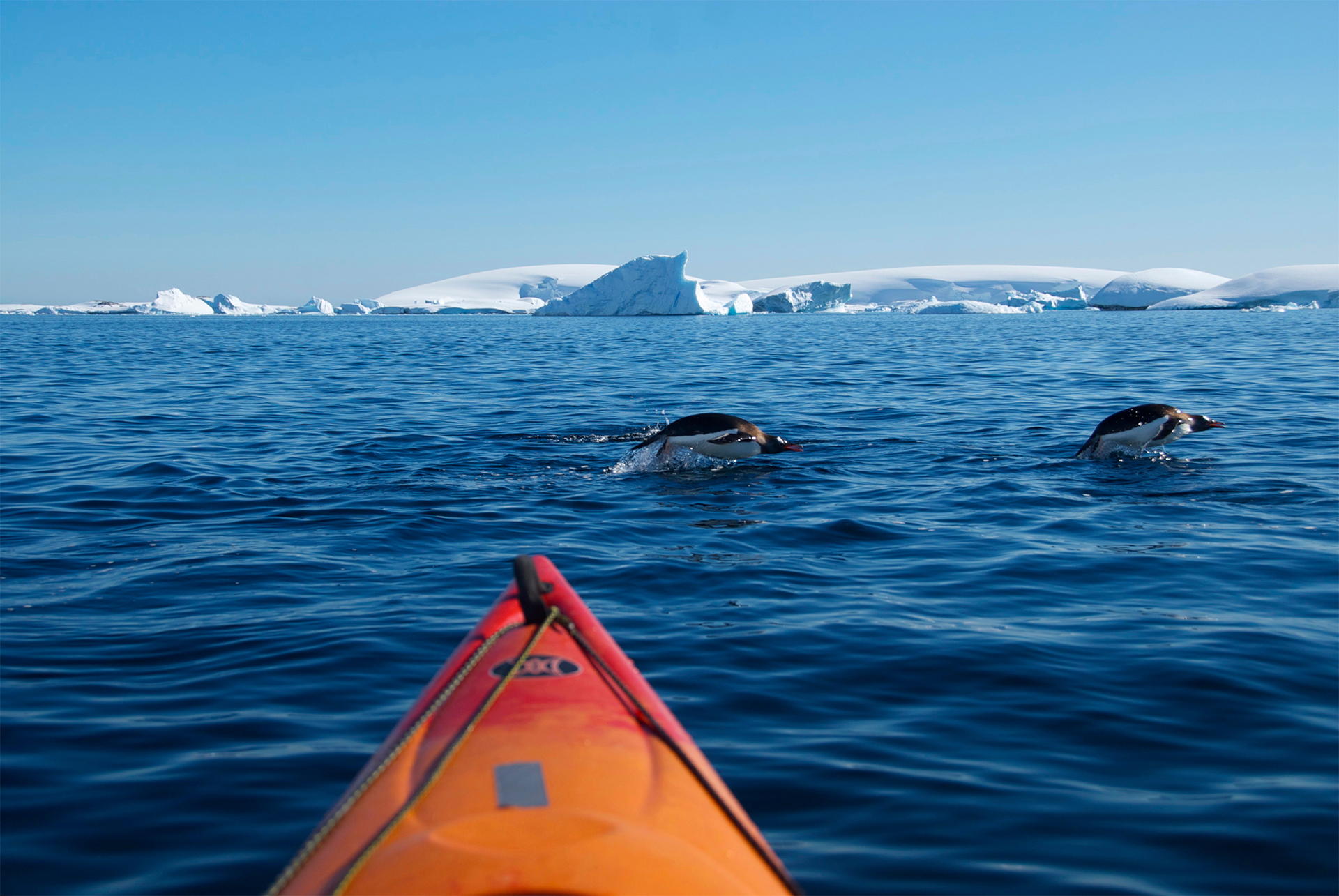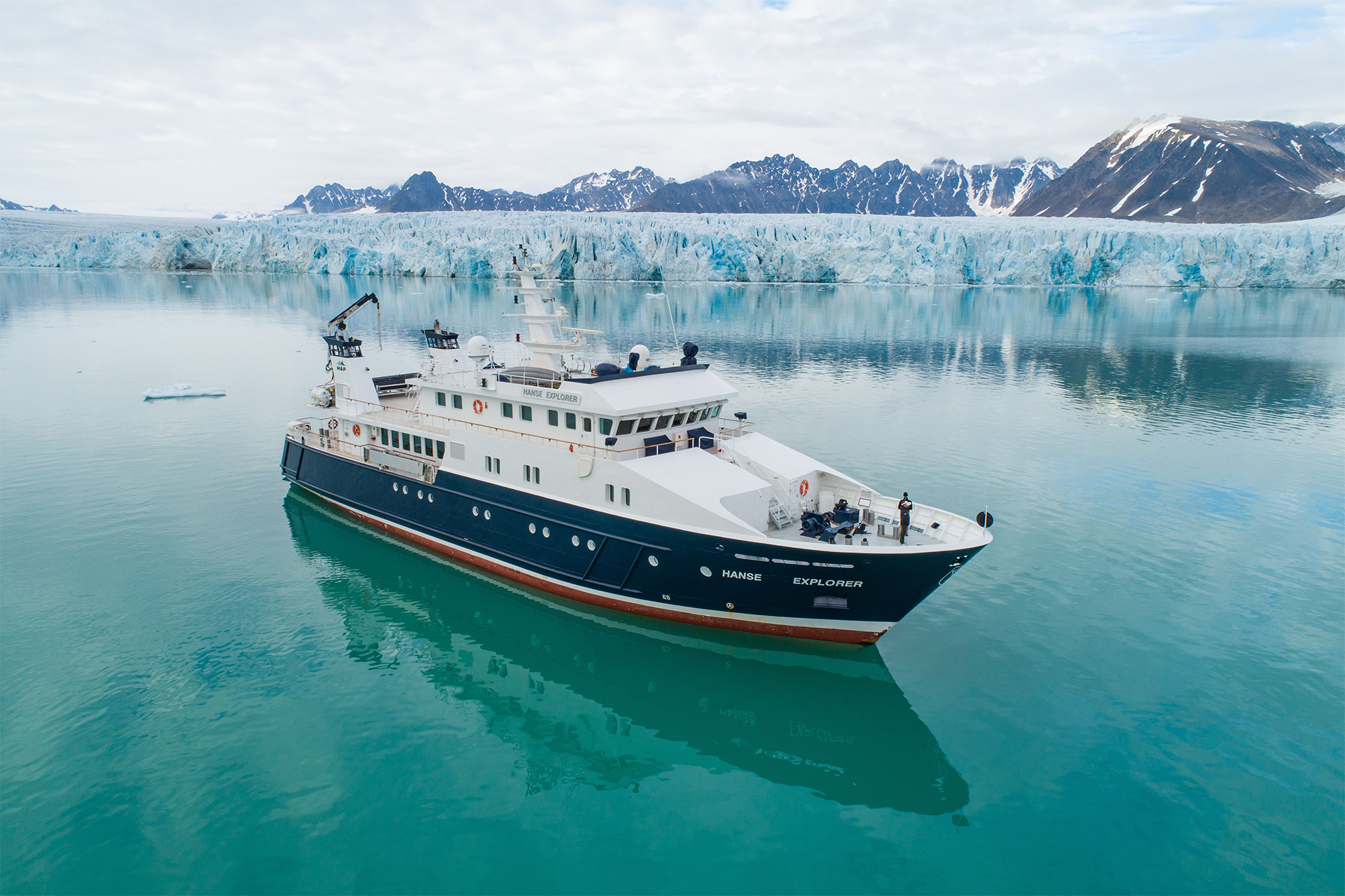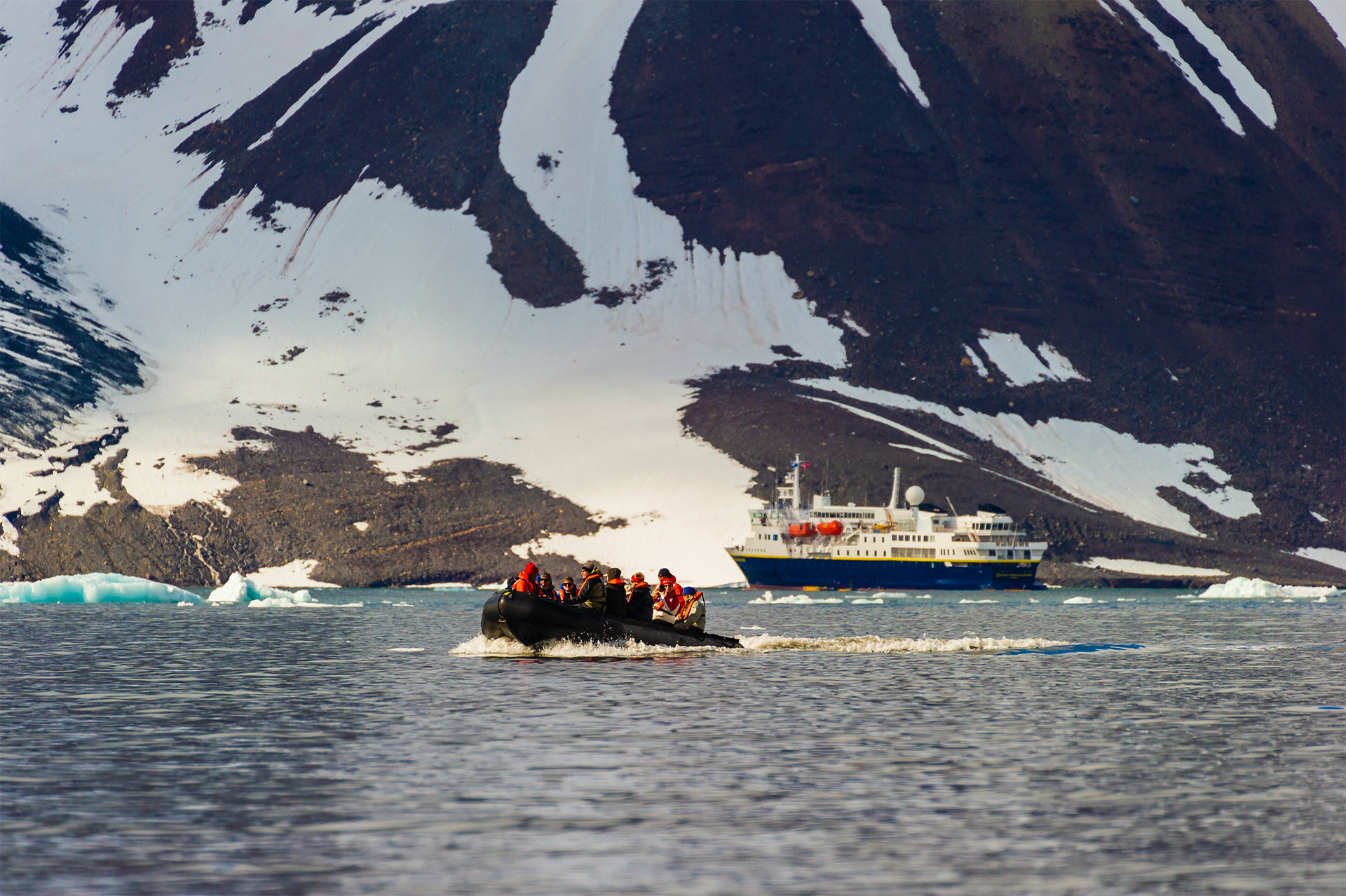We were kayaking among patches of floating ice, penguins porpoising through the waters between us, when our guide got the call over the radio. “Who here is ready to step foot on the Antarctic continent?” He asked our group, projecting his voice to rise over the hissing and crackling sounds of the bergs bobbing across the sea from us.
“Me! Me!!” We all cried out in unison.
Not everyone who visits Antarctica has an opportunity to make it onto the continent itself. Weather conditions in this land of stark white hillsides and hanging glaciers are as temperamental as a child. You never know what you’re going to get. Still, one thing is certain: the ship that you travel on can make all the difference.
From traveling aboard an intimate motor-sailing yacht with no more than a handful of passengers to opting for a larger ship chock full of creature comforts, there is a myriad of ways to explore polar waters. Sailing upon the vessel that fits you requires a bit of footwork.

Start by asking yourself, “what kind of experience am I after?” Would you like a chance to bed down on the ice for a night or even two, or would you rather have an en suite bathroom and the ability to watch a dazzling Antarctic sunset from the soothing waters of a jacuzzi? Do you prefer the comradery of dining among dozens of others, swapping stories about your latest orca sighting or encounter with a curious Gentoo penguin? Or is an intimate meal among a small group that’s become more like family your thing?
While most Antarctic cruises carry anywhere from 50 to 150 passengers or more, larger ships can make it tougher to maximize time on land (add reason here). However, Nab Hab knows that not every vessel and/or passenger is alike, so we utilize a range of ships, styles, and experiences to consider. Get ready to choose your own adventure.
Sailing

© Kelly Daughtry
If it’s channeling the Heroic Age of Antarctic explorers like Shackleton and Amundsen that you’re after, then a small sailing vessel may be for you.
Charter-size vessels like our 66-foot ketch-rigged motor sailing yacht, Ocean Tramp, and 75-foot ice-strengthened motorsailer, Australis, provide passengers an opportunity to experience the same solitude and silence of age-old explorations, navigating channels too snug for larger ships, and setting foot on hard-to-reach beaches that few have ever seen.
Such a small group size (no more than seven guests, total) allows each ship extreme flexibility, whether it be barbecuing together on an outdoor deck under bluebird skies or getting a front-row seat to the bubble-feeding of humpback whales. You can even spend a couple of nights camping right on the land itself, bedding down with a few other intrepid souls beneath the stars in the company of penguins.

© Daniel Stavert
Although they have fewer bells and whistles than larger ships (cabins are compact, most of them sporting upper and lower berths and shared bathrooms), for a truly personal experience, there’s nothing like traveling aboard a small sailing vessel. It’s almost like having your own private expedition, with home-cooked meals and a little more than a handful of other intrepid souls with whom to share the experience.

© Daniel Stavert
Both vessels feature kayaks and Zodiac for even more up-close exploring, and the choice of either flying round-trip from Punta Arenas to Antarctica to begin your journey on King George Island or flying to or from the Antarctic Peninsula and returning by sailing vessel the opposite way. Not only does it cut down on traveling time, but it also gives you an opportunity to experience the legendary Drake Passage—a notoriously fickle sea—without overdoing it.
Luxury Expedition Yacht

For the intimacy of a small size ship that’s decidedly heartier and more rugged in build, an expedition yacht is the way to go. In fact, vessels like the Hanse Explorer are seasoned veterans of polar waters.
Part of Nat Hab’s Antarctic fleet, the ship received a complete retrofit and redesign in 2020 (it was originally built in 2006), including the addition of new retractable zero-speed fin stabilizers. These keep the ship steady as she breaks through the ice.

The larger size of a luxury expedition yacht (the Hanse Explorer or 156-feet-long) provides more public spaces for swapping stories—including an observation room where you can talk with the ship’s captain—and allows for extra creature comforts like an onboard spa and jacuzzi, as well as en suite bathrooms. However, with just 12 guests in total, it still feels incredibly intimate.
Zodiacs and kayaks are the norms, along with the convenience (and time-saver) of being able to fly to Antarctica one way and sail the other round-trip.
Polar Expedition Vessel

Larger polar-expedition vessels are ideal if you’d like the thrill of the adventure with the ease of a bigger ship.
Nat Hab partners with Lindblad Expeditions, whose ships Expedition, Endurance and Resolution range in size from 126 passengers to 148 and come equipped with the most scientific advancements. We’re talking hydro-phones for recording or listening to underwater sounds, remotely operated vehicles crafted for undersea exploration, and even in-room tablets on which you can follow along in the adventure.
Regale others with stories of waddling chinstrap penguins in the lounge, sip whiskey and ginger cocktails in the bar, or watch the sea float by from the warmth of an onboard sauna. Yoga classes make it especially easy to perfect your downward dog, and there’s onboard snorkeling gear and wetsuits for taking full advantage of the sea.

On larger ships like these, you’ll also have a choice of dining options (and passengers to dine with), added amenities such as an onboard library and fitness center, and a mud room for storing your expedition gear—assuring that your en suite lodging is strictly for relaxing.
Thanks to these ships’ spaciousness, many guestrooms are designed with outdoor balconies, making it easy to keep an eye on Antarctica’s vast beauty from the comfort of your cabin.

